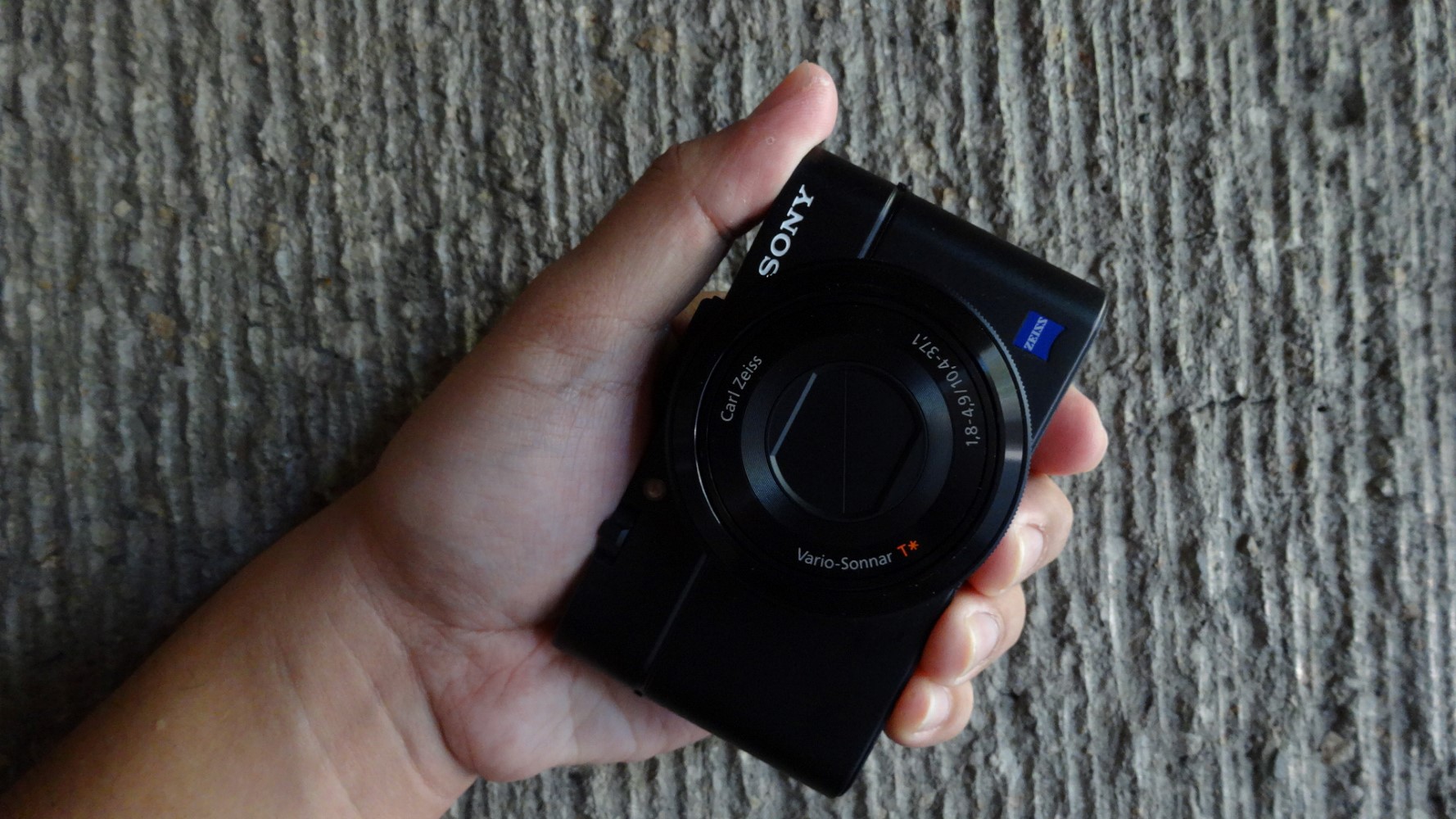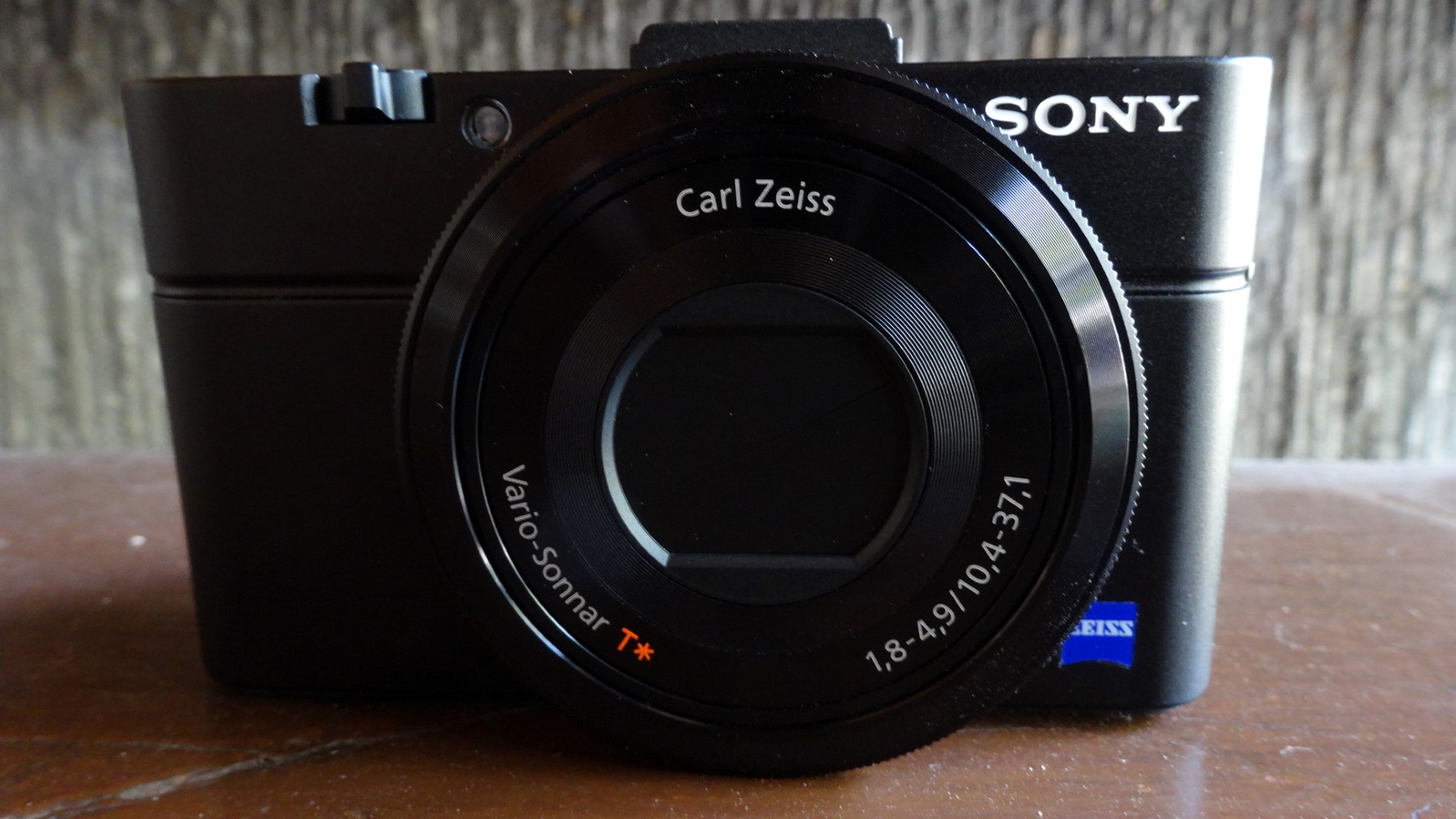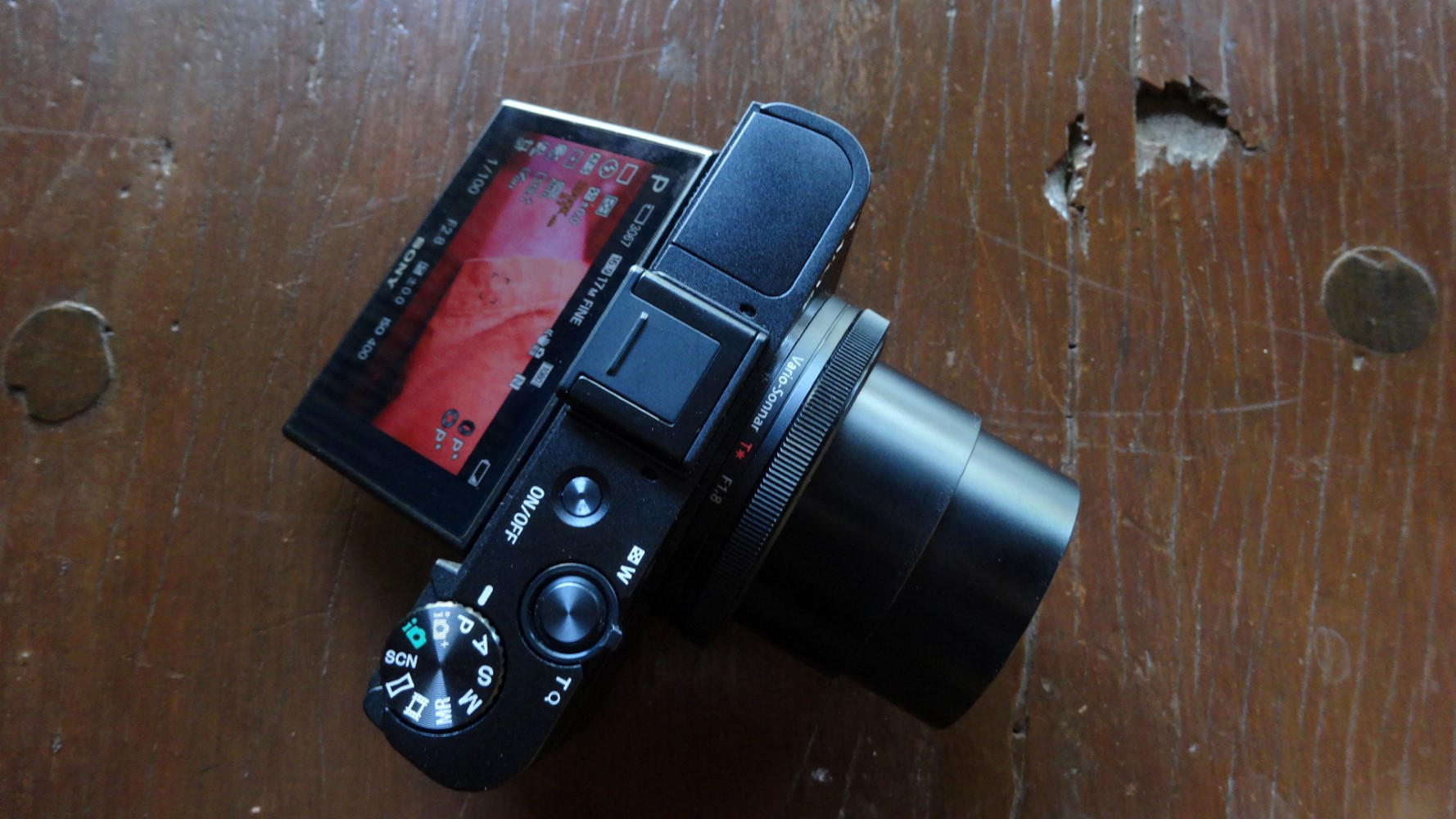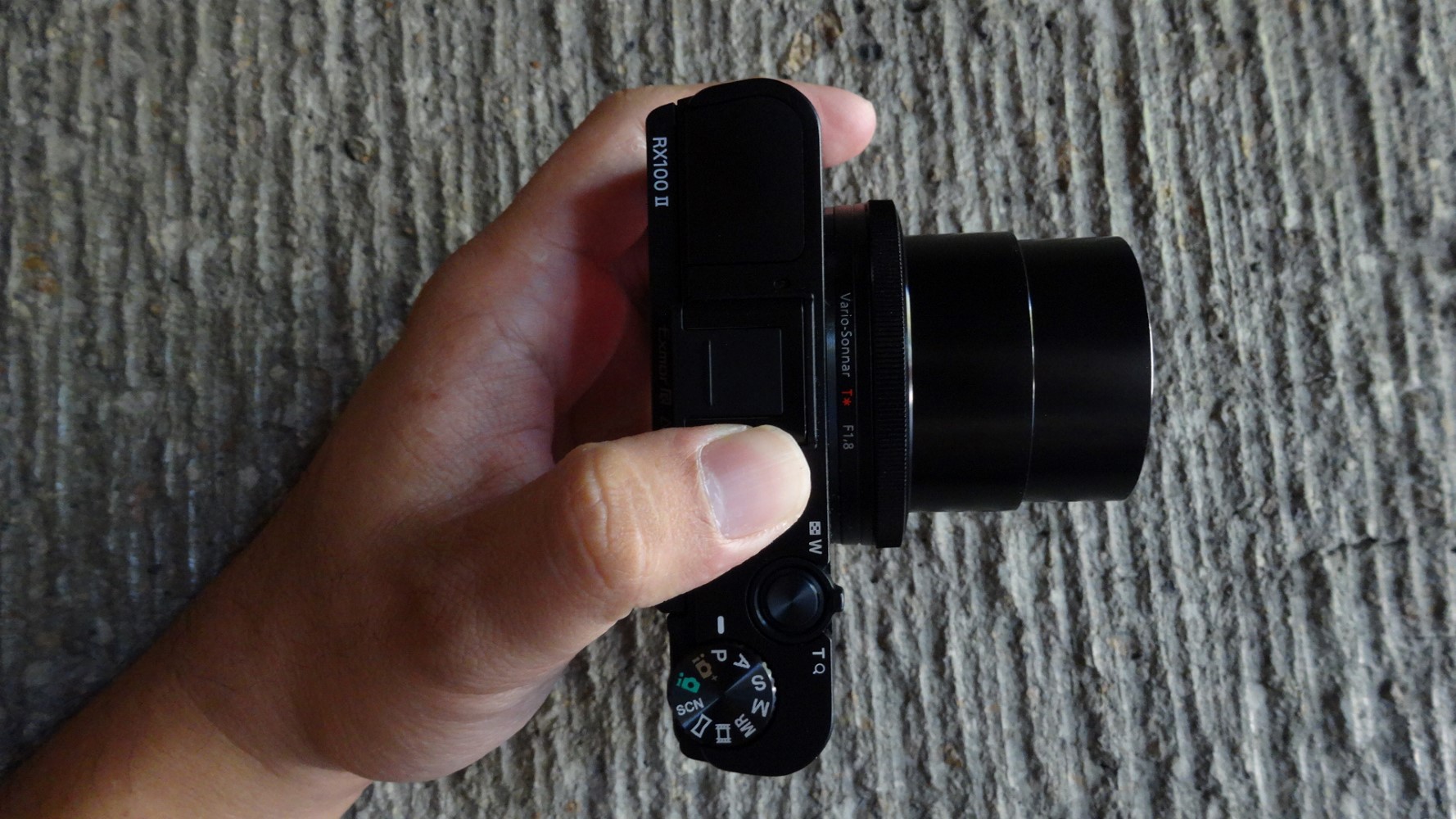This review has been sitting on draft for quite some time. For one, I’m reviewing a camera that was released during the latter part of 2013 so by all means it isn’t new. Secondly, it’s hard to write this review without removing my fanboy cap. This is seriously the best point and shoot camera available in Sony’s stable of imaging devices. I’d even go as far as to say that this is the best point and shoot camera in its class, especially when you’re looking at devices in the PHP 30,000 range. So yeah, let’s fanboy away.
(Note: Apologies to the dust particles on the camera!)
In the Philippines, rarely will you see the Sony Cyber-shot DSC RX-100 Mark II on the Sony store display shelves. It’s under-hyped in favor of the ‘Alpha’ DSLR line and the NEX line of compact cameras. Looks-wise, it closely resembles the jet black Cyber-shot W series, meaning that this is the compact line of cameras that don’t utilize a touch screen (the “T” series is the touch screen variant). Also, the Mark II is a follow up to, well, the Mark I (or simply, the RX-100), which was released in 2012 and is still available in markets today. Note that the official SRP of the RX-100 is around PHP 26,000 while the RX-100 MkII is at PHP 35,000. Some places sell it cheaper.
I encountered the RX-100 from diver friends who have been using it as their compact setup for both photography and video. More and more of them have been pushing out excellent underwater photos and video with this compact setup.

Here are the main differences between the between the RX-100 (2012) and the RX-100 Mark II (2013):
– Mark II has a movable viewfinder which is useful for shooting high and low; it’s useless for underwater photography because you won’t be able to move the screen when it is inside a case
– Mark II has a built in hot shoe in case you want to attach an external flash or a microphone
– Mark II has built-in WiFi transfer which works well with the Sony Play Memories app environment
– Mark II has a slightly better low-light feature, but that’s already considering that Mark I has a top notch 1-inch sensor so there’s really barely any difference in terms of photo and video quality
Just look at how that lens pops out of the seemingly small body. The secret to the RX-100’s awesomeness is the 1-inch sensor that is responsible for such clarity and low light compensation. Which is why in underwater use, I’m able to get good on Program mode without having to compensate my ISO much. If you’ve also seen other underwater videos before, you may notice an overcast blue on most of these. The RX-100 Mark I and II have excellent white balance compensation so that even without the use of a flash, the natural light + custom white balance is more than enough to give you correct colors underwater.
The Mark II has one particular feature I like, which is the option to set 3 custom shooting modes. Although it takes several button presses to engage these settings on the menu, I particularly find it useful for setting custom white balance at different depths. When SCUBA diving, ambient light changes the deeper you go. At the beginning of my descent, I can adjust and save 3 different white balance presets by targeting the substrate (white / gray sand) or a dive slate at different depths (usually 20 ft, 40 ft and 60 ft) to get correct colors.
On land, I stick to Intelligent Auto (which is basically a composite shooting mode) or “P” mode. I don’t do manual on land because it defeats the purpose of toting a point and shoot camera around. I’ve attached some sample photos at the bottom of this review.
Bottomline
This is the best point and shoot camera in its class. To say that it is one of the most amazing underwater cameras only means that it can deliver excellent photos and video under extreme conditions where light is both sparse and unforgiving.

Specs (c/o Sony Website)
20.2MP
1″ Exmor® CMOS sensor
f/1.8 Carl Zeiss® Vario-Sonnar T* lens with 3.6x zoom
High speed AF
Connectivity to smartphones via Wi-Fi® or NFC
Up to ISO 12800 sensitivity
P/A/S/M modes
JPEG and RAW image capture
Tiltable 3″ display
In The Box
Rechargeable Battery Pack NP-BX1
AC Adaptor AC-UB10
Micro USB cable
Wrist Strap
Shoulder Strap Adaptor
Instruction Manual







2 replies on “Sony Cyber-shot RX-100 Mark II Review: Look no further. This is the best point and shoot camera.”
[…] UPDATE: Check out my RX-100 Mark II camera review […]
[…] RX-100 Housing (w/ camera inside) in center compartment – two YS-110a strobes in both lens compartments – wide angle wet lens adapter […]